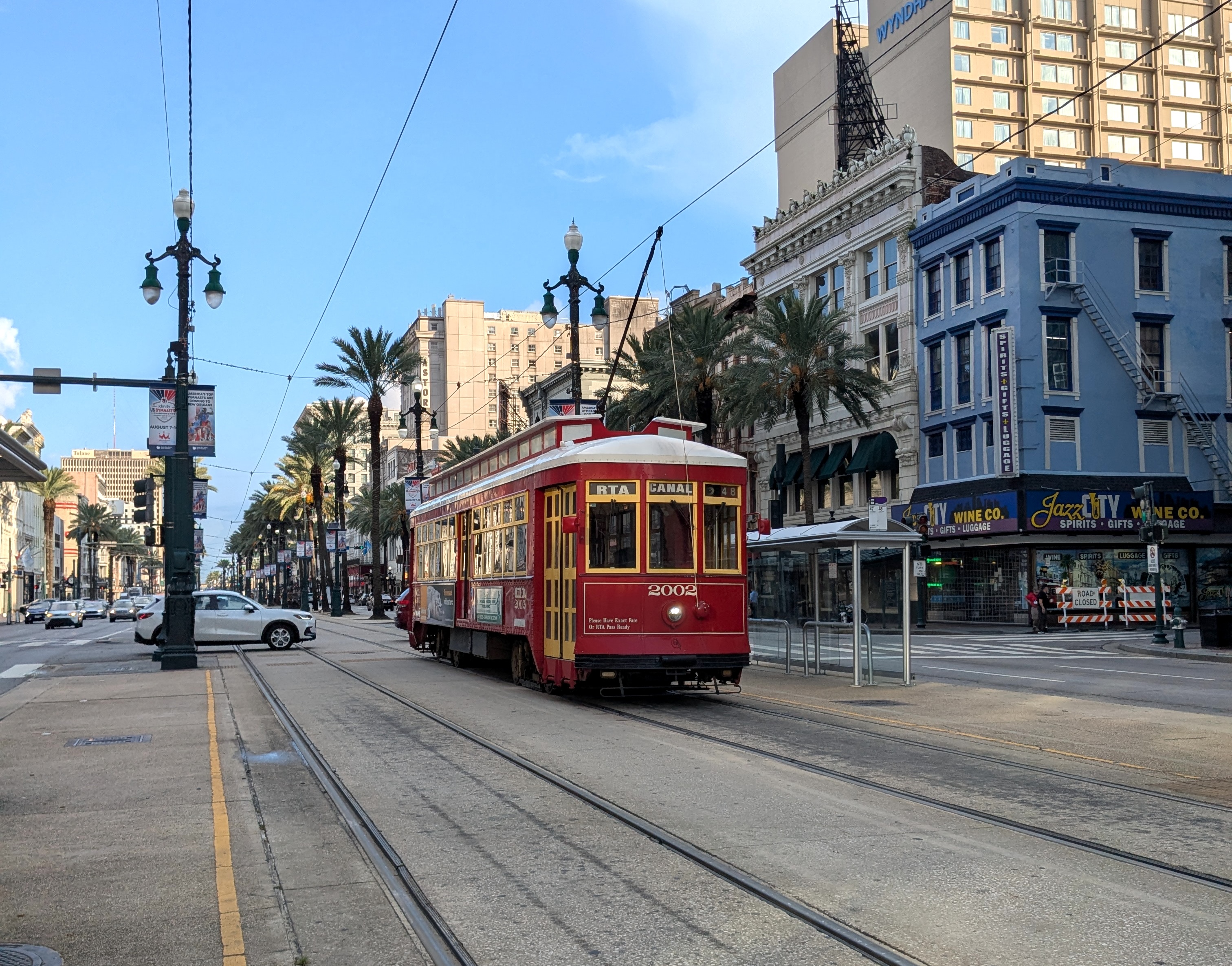Who are you?
What industry do you work in?
Members of the Jawnt team share their favorite topics from #ACT25, ranging from AI in transportation to megaevent planning to community-focused carpooling.

This year’s ACT International in New Orleans was an energetic gathering of transportation leaders, planners, policymakers, and innovators. Over four days, TDM leaders from across the globe shared bold ideas, tackled pressing mobility challenges, and forged connections to move transportation forward.
Jeff, Ruth, Luc, Abbie, and Nikki from the Jawnt team were on the ground to listen, learn, and join the conversation. Below are the four biggest takeaways they brought home, and how those visions tie into Jawnt’s vision for better transportation for all.
Back in April, I wrote a blog post about why transportation teams should own commuter benefits. It was kind of a spicy take at the time, with commuter benefits historically living under HR with all other pre-tax and payroll-connected benefits.
But at this year’s conference, we were pleasantly surprised to hear from TDM folks at several large organizations who have successfully moved commuter benefits to their transportation teams (or are thinking of doing so). As a result, they’ll be able to:
Plus, it frees up the HR team from fielding questions about commuter benefits, and makes for an even more competitive benefits package. A win for everybody!
- Nikki
With the 2026 FIFA World Cup and 2028 Olympic Games on the horizon, transportation leaders in Los Angeles, San Francisco, Philadelphia and other metros are thinking big about scalable, people-first solutions. The panel “Stadium and Megaevent Mobility Playbooks” brought together leaders from the Los Angeles County Metropolitan Transportation Authority, the San Francisco Giants, and Golden State Warriors to share what’s possible around these once-in-a-generation opportunities.
Beyond the immediate needs of these events, organizations are also looking at how to scale for short-term high-demand while leaving behind lasting infrastructure improvements. For example, how can tech platforms integrate fare management systems, leverage crowd data for real-time routing, and create seamless experiences for attendees navigating unfamiliar transit networks?
ACT recently published a playbook on this topic that highlights learnings and best practices from UK venues like Wimbledon and Wembley Stadium. Worth a read!
- Luc
Carpools and vanpools never get the credit they deserve. Infinitely scalable, suitable in any climate, and viable even in low-density transit deserts, matching people up for a shared ride can reduce the number of cars on the road.
But carpools do more than reduce VMT and CO2. Carpools also lower barriers to participation and create community. In this age of increased loneliness, why not take every opportunity to bring people together? Vendors are responding by expanding their carpool and vanpool matching tools to support pools for more modes: welcome to transit pools, walk pools, and bike pools. And employers are expanding their support for all pools, offering incentives to help people form and get comfortable with their new groups, such as a gift card for lunch offsite before a first ride.
As urban funding gets tighter, I’m excited to see more rural and suburban-friendly solutions take center stage.
- Ruth
Jawnt’s west coast office is located in the AI capital of the world, where artificial intelligence is transforming technology across all sectors, often controversially so. In transportation, companies are using it to optimize routes, predict ridership patterns, and engage with riders in ways we couldn't imagine just a few years ago.
I had the chance to dive deeper into this topic during the panel "AI in Action: How TDM Leaders Can Leverage Artificial Intelligence," alongside industry leaders from Agile Mile and Commutifi. During the session, I shared how we're taking a measured approach to AI at Jawnt. We use artificial intelligence to increase internal efficiency and streamline operations, but we're committed to maintaining human-centric support and services. When you're moving millions of dollars in funds every day, those financial processes demand rigorous human supervision and compliance, and can’t be left to AI alone.
A key takeaway from the panel was knowing when and where to deploy AI effectively. It's a powerful tool, but it's not a silver bullet. The most successful transportation solutions will be those that thoughtfully combine AI's capabilities with irreplaceable human judgment, empathy, and accountability.
- Jeff
---
ACT 2025 left us inspired and energized, and also reminded us that at its core, the future of transportation is still about people. Beyond infrastructure, planning, and payments technology, the best transportation solutions are those that put human needs at the center.
Our conversations in New Orleans reinforced our belief that sustainable, equitable mobility requires collaboration across sectors, creative problem-solving, and a willingness to challenge how things have always been done. We're already looking forward to next year's conference and the chance to continue these important conversations.
See you in Philly for ACT’s 40th anniversary!
.jpg)
.jpg)
.jpg)